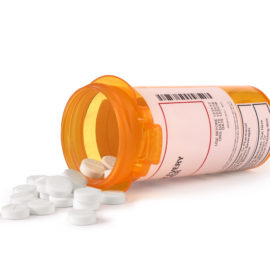A drug taper is one effective way to wean off drugs or medications after developing physical dependence on illicit drugs, prescription medications, or alcohol.
Physical dependence can arise from the use and misuse of illicit narcotics, prescription medications, and alcohol. Dependence encompasses both tolerance, where higher doses are needed to deliver the initial effects, and withdrawal, characterized by negative physical and emotional symptoms when discontinuing the drug abruptly or reducing its dosage significantly. Tolerance and withdrawal are both diagnostic criteria for addiction.
A common approach to address withdrawal symptoms involves utilizing tapering strategies, then. ASAM (American Association of Addiction Medicine), a prominent organization of healthcare professionals in the field of addiction, has established guidelines for managing withdrawal from various substances, often involving drug tapering.
This guide highlights issues that include:
- What is drug taper: drug taper definition.
- A drug taper example – what to expect when weaning off medication.
- What are the benefits of tapering medication?
- Weaning off medication, alcohol, or illicit drugs in Southern California – connect with evidence-based treatment near you.
What is Drug Tapering?
When someone becomes physically dependent on a drug, their body and brain chemistry can undergo significant changes. This often triggers the manifestation of withdrawal symptoms upon discontinuation, especially in cases of prolonged or heavy consumption. Such symptoms can range from uncomfortable to life-threatening, especially in scenarios involving opioids, benzodiazepines, or alcohol.
To mitigate severe withdrawal symptoms and facilitate lasting recovery, many rehab centers have integrated drug tapering into their treatment approaches. Tapering involves gradually reducing the dosage of an addictive substance over time to help someone wean off medication, drugs, or alcohol. Under the supervision of experienced medical professionals, tapering allows the body to slowly adapt to the absence of the addictive substance, providing relief from more intense withdrawal symptoms. However, to avoid accidental overdose, individuals tapering off alcohol or drugs should only do so under professional guidance.
Drug tapering has become a widely accepted practice within the rehabilitation community. To ensure consistency, ASAM offers clinicians and physicians guidelines to taper patients off substances in the safest and most efficient manner.
Drug tapering and withdrawal management are distinct from comprehensive drug or alcohol treatment. Tapering is most effective when integrated into a comprehensive program that includes clinical components like individual and group therapy while someone is weaned off medication or other addictive substances.

The Drug Tapering Process
During treatment, three primary methods of tapering are utilized: direct tapering, substitution tapering, and titration tapering. The choice of method depends on the person’s medical history and current condition.
- Direct tapering: This method involves gradually reducing the drug dosage an individual takes. It is effective when someone has been using high doses of a long-acting substance or one that doesn’t accumulate in the bloodstream. Weekly decreases in dosage helps the person discontinue use without experiencing severe withdrawal symptoms.
- Substitution tapering: Used for illicit, short-acting, or low-dose substance addictions, substitution tapering replaces the addictive substance with a similar but more easily tapered one. Controlled amounts of a medication with lower abuse potential are administered, allowing precise and gradual dosage reduction.
- Titration tapering: This method involves dissolving a small amount of a low-dose drug in water to further dilute it. Titration tapering is rarely used in clinical settings due to the risks involved. It may lead to unintentional overdose or ineffective tapering, especially with drugs that are not water-soluble. Without proper medical equipment, measuring specific doses in diluted solutions is challenging and potentially dangerous. Titration tapering should never be attempted without professional supervision due to its inherent risks. Proper medical guidance ensures safe and effective tapering and minimizes the potential for adverse outcomes.
Variability in the tapering process is influenced by the specific drug, the individual, and the treating physician. This is a general framework for the tapering process:
- Initial administration: The physician begins by providing a minimal dose to prevent significant withdrawal symptoms. Starting doses differ based on medications. After administering the initial dose, recovery is monitored, and the dose is adjusted if notable withdrawal symptoms emerge. Once the starting dose is set, the tapering process begins gradually.
- Initial dosage reduction: Typically, the initial reduction is about 10% of the starting medication dose. This percentage may be adjusted based on the individual’s response and withdrawal symptoms. Usually, this reduction occurs within one to two weeks. That said, protocols can vary among withdrawal management programs, subject to individual reactions.
- Subsequent reductions: Subsequent dosage reductions are spaced 1 to 2 weeks apart, with the guideline being a 10% reduction from the starting dose.
- Further reductions: As the dosage approaches 80% to 90% less than the initial dose, smaller reductions like 5% may be necessary to prevent significant withdrawal symptoms.
- Complete discontinuation: Ultimately, when the patient is receiving only about 5% of the initial dose, discontinuation from the drug may be practical. This signifies the end of the tapering process.
Is Drug Tapering the Best Method for Withdrawal?
While drug tapering is a widely used and effective method for managing withdrawal symptoms, it may not always be the best approach for every individual. The suitability of drug tapering depends on factors such as the type of drug, the severity of addiction, overall health, and ability to adhere to a tapering schedule.
Drug tapering is especially beneficial when dealing with substances that have a high risk of withdrawal symptoms – opioids and benzodiazepines, for instance. It allows the body to gradually adjust to reduced dosages, minimizing the intensity of withdrawal symptoms, and reducing the risk of severe complications.
However, for individuals with certain medical conditions, a history of severe addiction, or those who are not able to comply with a tapering schedule, alternative approaches may be considered. In some cases, a medically supervised detoxification process, which involves replacing the addictive substance with medications that mitigate withdrawal symptoms, might be more appropriate.
The decision to use drug tapering as the method for withdrawal should be made in consultation with experienced medical professionals. A personalized approach that takes into account the individual’s medical history, addiction severity, and specific needs will help determine whether drug tapering is the best course of action or if an alternative approach should be pursued.
FAQs
What is a drug taper?
A drug taper is a gradual reduction in the dosage of a medication to minimize withdrawal symptoms and safely discontinue its use.
Are there tapering medications for drug withdrawal?
Yes, tapering medications like methadone and Suboxone can be used to replace the original drug and aid in the withdrawal process.
What is the best way to wean off drugs?
The best way to wean off drugs is often through a structured tapering plan under medical supervision, gradually decreasing the dosage to prevent severe withdrawal.
Can rehab help you wean off medication?
Yes, rehab programs can provide medical support and guidance to help individuals safely taper off medications as part of a comprehensive treatment plan.

Get Effective Treatment for Drug Withdrawal at Gratitude Lodge
At Gratitude Lodge, located in Southern California, we specialize in providing comprehensive treatment for drug withdrawal and mental health conditions. Our rehab centers, situated in Newport Beach and Long Beach, CA, offer a holistic approach to recovery, including supervised medical detox for a safe withdrawal process.
Our medical detox program ensures a secure and gradual transition into a 30-day inpatient program. Our treatment options encompass various strategies, such as MAT (medication-assisted treatment), psychotherapy, group therapy, individual counseling, family therapy, holistic therapies, and aftercare support.
If you’re looking to transition from drug addiction to lasting recovery, trust in Gratitude Lodge. Contact our admissions team at 800-994-2184 to take your first step towards a brighter, healthier future.




























